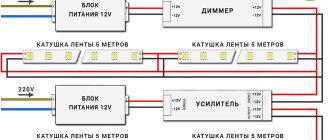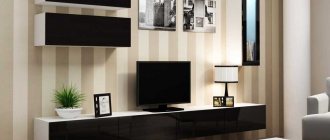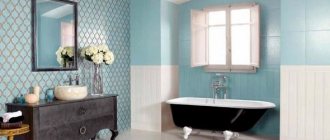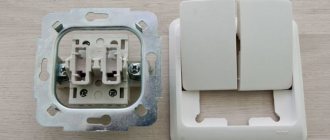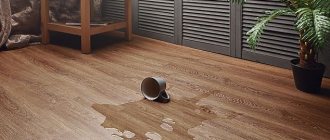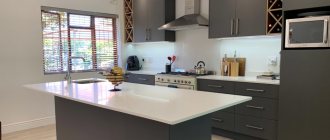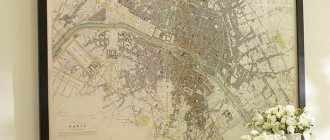Comparison of building blocks refers to information that will be useful to anyone who is faced with the issue of building a private house. The modern construction market offers a huge variety of building materials for the construction of walls, each of which has a number of advantages, features and disadvantages and will be relevant in a given situation.
Today there is a wide variety of building materials. In order to decide on the material, it is necessary to conduct a comparative analysis of all materials.
Today, expanded clay concrete, foam concrete, gas silicate, sawdust concrete sections and cinder blocks are well known and successfully used in the construction world. You can buy Aerok gas block in Kharkov
Today, expanded clay concrete, foam concrete, gas silicate, sawdust concrete sections and cinder blocks are well known and successfully used in the construction world. You can buy Aerok gas block in Kharkov
Expanded clay concrete blocks are the main wall materials.
Expanded clay concrete structures belong to the group of wall materials. Their production is carried out on the basis of sand, cement and expanded clay using the vibration pressing method followed by steaming. The construction market offers solid and hollow types, which are actively used for the construction of load-bearing walls of houses, laying openings and partitions in monolithic housing construction.
During installation, special attention should be paid to the location of voids and the absence of through holes, which should be directed downward, otherwise the solution will fall inside the wall.
When producing blocks, the ratio of the constituent components is of great importance; they determine the performance characteristics. With an increase in the proportion of expanded clay, the structure acquires improved heat-shielding properties; with an increase in the amount of cement and sand, the resulting material acquires greater mass and thermal conductivity. Almost all expanded clay concrete is produced with the addition of sand, but technologies make it possible to create building sections on cement foam.
Foam concrete blocks are used for the construction of house walls and partitions.
The use of quartz sand, crushed granite, organic dye, cement and water in production at this stage of industrial development is among the advanced technologies used throughout the world. The production of such blocks does not have a negative impact on the environment and does not require the use of aggressive chemicals. A fair comparison can be made with natural stone. Sand-cement crushed blocks have the maximum resemblance to natural chipped wild stone, which is why they are especially popular among architects.
Foam concrete blocks consist of sand, cement and foaming agents. The production of blocks is carried out by the methods of porous solution or mineralization of foam with further heat treatment. Installation is carried out using sand-cement mortar or special mixtures (adhesives). It is used for the construction of partitions, walls of houses and laying openings of monolithic structures.
The basis of sawdust concrete blocks is wood production waste.
The composition of gas silicate blocks includes sand, foaming agents and silicate binder. The technology of its production is as similar as possible to the production of foam concrete, however, it is mounted exclusively with special glue and can be used exclusively for the installation of non-load-bearing walls and partitions. You can buy udk gas block in Kharkov
Sawdust concrete blocks are made on the basis of expanded clay concrete production technology. The only difference is that the role of filler in sawdust concrete blocks is performed by waste wood production, and not expanded clay.
For the production of cinder blocks, waste from the steel industry, namely blast furnace slag, is used.
Advantages and disadvantages of blocks
Each type of wall material has advantages and disadvantages that should be taken into account when choosing a material for construction.
Thermal insulation properties of main wall materials.
Expanded clay concrete blocks have greater strength compared to other block materials. In addition, it is worth pointing out the high levels of frost resistance, which ultimately have a direct impact on the service life of buildings and the reliability of the structure.
Low water absorption makes the material resistant to weather conditions. Not least important when choosing is the low cost of materials; in this category, expanded clay concrete blocks occupy the most advantageous positions. The technological process succeeded in achieving no shrinkage, and as a result, changes in the geometry of the walls and cracks in the walls in the future. Among the disadvantages of such blocks are their heavy weight and imperfect geometry.
Foam concrete has a sufficient number of advantages. For example, it is durable and quite easy to install.
The foam concrete block has less weight and ideal geometry, which greatly facilitates installation. The safety margin will be sufficient for construction, but it is worth remembering the low frost resistance and water absorption, close to 100%, which in turn puts forward requirements for the organization of insulation and insulation of the wall.
The negative aspects of this material include the inconvenience of fastening, since the porous structure of the blocks does not make it possible to securely secure the dowels. The presence of a porous structure can cause the spread of various fungal formations. And due to shrinkage during the operation of the building, cracks appear.
Gas silicate gas block Kharkov is the best option if the main choice is to ensure ease of installation and the shortest construction time. It was possible to achieve such indicators thanks to low weight and ideal geometry. Gas silicate blocks are widely used when carrying out work in residential premises, since they allow installation with glue.
Among the negative aspects, it is advisable to point out the low frost resistance, strength and water absorption, which significantly narrows the scope of application. They are relevant in dry and warm rooms as a partition material. In addition, blocks are prone to shrinkage and cracking.
Technical characteristics of sawdust concrete types.
Sawdust concrete blocks have a fairly low cost and light weight. In matters of environmental friendliness, sawdust concrete occupies a leading position among the entire variety of concrete building materials. However, due to the hygroscopicity of sawdust, the blocks require protection from moisture both inside and outside the room. For this purpose, plastering with cement-sand mortar, cladding with boards or facing with bricks is carried out.
However, high water absorption and insufficient frost resistance significantly reduce the service life. Due to the use of sawdust in concrete, the blocks have poor geometry, which complicates installation work.
Cinder block is the oldest construction material, which is used in rare cases due to low environmental friendliness, the presence of blast furnace slag, low frost resistance and water absorption. Among the minor advantages, it is worth noting light weight and low cost.
Comparison options
Basic indicators for comparison of wall materials.
Comparison of building wall blocks must be carried out according to a number of parameters that have a direct impact on the durability and strength of the structure.
- The concept of strength refers to the possible load that can be placed on a block.
- Volumetric weight is the conditional density of building blocks taking into account voids.
- The thermal conductivity indicators of the blocks show the amount of heat that will escape through a wall with an area of 1 m? with a temperature difference of 1°C.
- Frost resistance is a concept that shows the number of freezing/thawing cycles, after which the strength of the blocks will decrease by 10%. For central Russia, 1 cycle takes 1 year.
- Shrinkage is a value that shows how much the size of a block has decreased after construction. Water absorption is the amount of moisture that can be absorbed by a material.
The well-known brick has been replaced by a building block. Buildings made from this material are erected much faster and have a number of advantages, one of which is a high level of heat retention. After reading this article you will learn what building blocks are, types, sizes. The price of the product depends on the manufacturing method, materials and dimensions. Types of building blocks, photos, sizes, etc., we will now look at all this.
Pay attention to how you can reduce costs by using slotted expanded clay blocks.
- Artificial - those that are produced at enterprises by mixing dry mixtures in the required proportion. To make the products the required size, the mixture is poured into molds.
- Natural – those that are made by grinding natural stones. They are used mainly for decorative finishing.
Naturally, the budget ones are artificial building blocks. Kinds:
- concrete;
- expanded clay concrete;
- polystyrene concrete;
- gas silicate;
- foam concrete.
Concrete blocks: types, sizes, price
The release of products is regulated. According to this document, they are divided into three types:
- Solid foundation. FBS marking.
- With cutouts. FBV marking.
- Void. FBP marking.
- Solid foundation blocks are also called wall blocks.
Basement walls and foundations are built from them. They are highly resistant to loads, but at the same time have low thermal insulation properties. Placed on the ground or sand cushion. GOST (mentioned above) strictly regulates the dimensions of these products:
- length – 238 cm, 118 cm, 88 cm;
- height – 28 cm and 58 cm.
FBV blocks are solid blocks with cutouts for laying communications. They have special grooves for laying jumpers. Used for installation of ceilings. Dimensions:
- width – 30 cm, 40 cm, 50 cm, 60 cm;
- length – 88 cm; height – 58 cm.
Empty blocks. They have open voids pointing downwards. Dimensions according to GOST:
- width – 40 cm, 50 cm, 60 cm;
- length – 238 cm; height – 58 cm.
Product prices depend on many characteristics that are necessary specifically for your construction.
Expanded clay concrete blocks
Production is regulated. According to the standard, expanded clay concrete stones include products made from heavy, light and fine-grained concrete. They are produced hollow and solid. The thickness of the outer walls of hollow stones must be at least 2 cm, and the mass of the block must not exceed 31 kg. used for laying walls and partitions. So, there are front-line and private. Face stones have one (side) or two (side and end) front surfaces. Depending on the place in the masonry, there are row, corner and ligament stones. Dimensions:
- width – 7, 9, 19, 30, 39, 42.5, 49.5 cm;
- length – from 12 to 45 cm;
- height – 19 cm and 24 cm.
They have a density from 400 to 1800 kg/cub.m.
The production of polystyrene concrete is regulated. According to the standard, cement, water, strength additives and polystyrene foam granules are mixed to produce polystyrene concrete. Polystyrene concrete building blocks, their types:
- for the construction of load-bearing walls;
- for the construction of enclosing structures of frame buildings;
- for insulation.
These stones have a density of 150 to 600 kg/cubic meter and have high thermal insulation characteristics. The most commonly used stone sizes are:
- thermal insulation boards 60 cm x 30 cm x 9-20 cm;
- wall blocks 60 cm x 30 cm x 20-25 cm;
- interior partitions 60 cm x 30 cm x 8-12 cm.
Gas silicate building blocks. Types, properties
They come in the form of blocks or slabs. The release is regulated. - These are unreinforced products made of cellular concrete intended for the construction of load-bearing walls and partitions.
They can have pockets for gripping, technological through or non-through voids, and can also be made in a U-shape. Made in two ways:
- non-autoclave - the product hardens under normal conditions. Has a higher drying shrinkage rate and is less durable; autoclave - the product dries under the influence of steam, which is supplied under pressure. It has increased strength and drying shrinkage.
They are used without vapor barrier at air humidity up to 75%. Block dimensions 62.5 cm x 50 cm x 50 cm. Slab dimensions 150 cm x 100 cm x 60 cm. Characteristics that determine their properties:
- average density – not higher than D700; compressive strength – not lower than B1.5; thermal conductivity – from 0.08 to 0.1 W/m; drying shrinkage - according to ; frost resistance - for external walls F25, for other purposes F15; vapor tightness - according to GOST 31359.
The weight of the block varies from 17 to 40 kg.
Manufactured according to . Depending on the density, there are three types of foam blocks:
- structural - for building a foundation, plinth or load-bearing walls. Brands D1000, D1100, D1200. Density from 1000 to 1200 kg/cub.m; thermal insulation – for installation of an insulating layer. Brands D300, D350, D400, D500. Density from 150 to 400 kg/cub.m; structural and thermal insulation – for the construction of partitions and load-bearing walls. Brands D500, D600, D700, D800, D900. Density from 500 to 900 kg/cub.m.
Excellent heat retention. This is due to the porous structure of the stone.
Using building blocks will allow you to significantly save money while getting a high-quality, warm, reliable room that will serve you for more than a hundred years.
For a long time it was believed that a permanent house could only be built from brick. But now brickwork is gradually receding into the background due to its labor intensity. It has been replaced by more practical materials, the use of which does not require large amounts of cement mortar, time and labor. These are cellular blocks that have a porous structure and therefore are light in weight with quite impressive dimensions.
Using them you can build a house much faster than using other materials. There are several varieties of such blocks, to figure out which one is better, you need to do a little comparative analysis and find out the strengths and weaknesses of each.
These materials are manufactured using new technologies, their characteristics meet GOST, so the quality directly depends on the manufacturer’s compliance with the manufacturing technology and the selected raw materials.
The following types of blocks are distinguished:
Construction of houses from ceramic blocks
This type of blocks is interesting in its own way. Depending on the constituent substances, products can be divided into two types: porous and non-porous. Representatives of the first group include clay, foam waste and cellulose. Minor additives burn out under the influence of temperature, subsequently microscopic pores appear in the structure of the finished block, which provides greater thermal insulation.
Ceramic blocks can have different sizes and shapes
Non-porous blocks do not contain any additives. Therefore, they are heavier in weight and have less thermal insulation. Both groups have high levels of physical and technical characteristics. Good thermal efficiency, sound insulation, environmental friendliness, and ease of installation are also inherent in ceramic blocks.
They can be used for the construction of multi-storey buildings, the construction of interior partitions, and are suitable for performing complex architectural tasks. Due to its properties, ceramics do not require additional cladding, heat or waterproofing. This significantly reduces the cost estimate due to the exclusion of many additional materials.
A special feature of laying ceramic blocks is the mandatory purchase of special glue. The cement mortar has a very liquid consistency, which will fill all the pores of the block and thereby minimize many of its useful qualities. And a special glue with a thickness of only 2 cm can ensure the strength of the connection and not cause harm.
The second point to remember is the use of fiberglass mesh to cover the vertical seams. It is laid every 2 rows.
Construction of a house from ceramic blocks
The ceramic block has the following dimensions and cost: 25x120x65 mm - 12 rubles/piece, 250x120x140 and 250x120x140 mm - 17 rubles/piece, 250x250x140 and 80x500x219 mm - 45 rubles/piece, 150x50x219 mm - 60 rubles/piece . and 510x95x219 mm – 67 rub./piece.
How to choose
The durability of the building depends on the quality and strength of the walls. Many, given their good properties and reliability, choose proven materials. Here are the most popular ones.
Aerated concrete
Aerated concrete blocks are used most often, so they take first place. They are produced by mixing: lime, concrete, sand, water and aluminum powder. After heat treatment, their structure becomes porous. Many factories, having mastered their production and purchased good equipment, produce such material not only for walls, but also for ceilings, window and door lintels and other building elements of various sizes. Its wide range allows you to build housing entirely from these blocks.
The masonry is carried out using a special glue that can set quickly, which simplifies the work and the building is erected in the shortest possible time. Many aerated concrete products have special grooves and protrusions - ridges, through which the building elements are connected to each other. Also, often there are hollow holes for gripping on their side surfaces; sometimes cement is poured into them to strengthen the structure. After the external walls have been laid by experienced masons, they do not need to be tiled.
What are the disadvantages of a cinder block you can find out from this
Its most important characteristic is density, which is designated by the letter D. Its value can range from 350 to 1200 kg/m3. Aerated concrete is marked using numbers in front of the letter. Most often, its brands D500-D900 are used for the construction of residential buildings. The weight of one block with dimensions 600×250×200 mm is 18 kg. It replaces 20 bricks.
Gas silicate
They replace concrete analogues. It is made from a silicate binding component, sand and a foaming agent; due to its use, the material acquires a homogeneous cellular structure that can retain heat well in the middle of the house, and remove accumulated moisture during the heating season. They are produced using the autoclave method. It is used for already built houses as insulation.
What size cinder block is indicated?
Foam concrete
Consist of cement, sand, foaming agent and water. This foamed solution produces a foam material. It is very similar to aerated concrete, but is inferior to it in several strength characteristics. Its dimensions and weight depend on the production technology. This material can be laid using either cement mortar or a special adhesive composition. Foam blocks are used for private construction; they can be used to build outbuildings and two-story buildings.
What is cheaper: cinder block or foam block, you can find out from the description
Expanded clay concrete
Expanded clay concrete blocks are most often used in the construction of houses in Europe. Their composition is burnt clay mixed with expanded clay, water, sand and filler, which is expanded clay gravel. Sometimes lime or gypsum is used instead of cement.
What is the specific gravity of aerated concrete can be found by reading this
Such blocks are highly durable, which is why their popularity is growing every year. High-rise buildings are built from them. Ceramic block is not only highly durable, but also elastic. It has a corrugated surface and a porous structure; its blocks are joined together by specially provided grooves and protrusions. They can be used in conjunction with other building materials.
The sizes of such blocks are different, but the height is standard, it is a multiple of the brickwork. This is very convenient; you can use any brick house project. A block with dimensions of 500x248x238 mm weighs about 15 kg and replaces 15 bricks.
How much do they cost, price review
The price of these building products depends on many factors: size, manufacturer, quality of material, manufacturability, volume of purchased products and region of residence.
The table shows the estimated cost of various blocks:
The choice of material for building a private house depends primarily on the financial capabilities of its owners. There is no need to rush and it is better to save up for good-looking blocks than to buy a cheap, stale building product that will collapse over time. The materials described are lightweight and quick to install. When purchasing them, you can save a lot and build a truly warm home that can last more than a hundred years.
The appearance of masonry blocks was caused by two main reasons: the desire to reduce the labor intensity of building walls and improve their energy-saving characteristics.
Traditional clay bricks are no longer suitable for modern builders due to their size. However, it was unrealistic to increase its dimensions several times and reduce its weight without changing the technology of molding and firing. Therefore, all the efforts of researchers were aimed at searching for substances that create a large volume of gas or foam under certain conditions.
The search ended with the creation of the two most popular types of masonry blocks: and (gas silicate).
In addition to them, construction science offered the market, and. The most “ancient” type of artificial stone, the basis of which was originally blast furnace slag, was not forgotten.
Looking at the existing variety of wall materials, it is difficult for an inexperienced person to decide which blocks are better for building a house. To answer this question correctly, it is necessary to consider their main characteristics, sizes and prices.
What are the types of blocks for building a house: main types and characteristics
The larger dimensions of building blocks, compared to bricks, make it possible to lay masonry several times faster, and their relatively low weight greatly facilitates the work. This quality gave a significant impetus to their introduction to the market.
Large block sizes allow construction to be carried out quickly and easily
There are several classifications of blocks for construction. Depending on the dimensions of the product, they can be divided into the following groups: small-sized and large-sized. The first group includes products with small dimensions, low strength and heat conductivity. The second group will be represented by products with large sizes and high strength values, as well as average insulating characteristics.
Higher quality building blocks are classified by the type of material used to make them. The main component of all types is invariably concrete. Only minor materials and production technology vary.
The following groups can be distinguished here:
- concrete;
- expanded clay concrete;
- gas silicate;
- aerated concrete;
- foam concrete;
- polystyrene concrete;
- slag concrete;
- arbolite;
- ceramic.
3D visualization of a two-story cottage built from blocks
Defining characteristics and their influence on consumer choice
Considering in more detail all types of blocks for construction, you need to dwell on their main technical characteristics. These are density, thermal conductivity, compressive strength, frost resistance. They are the determining factors when choosing the right material. Based on these parameters and dimensions, the correct calculation of the number of blocks for building a house is made.
It is always worthwhile to clearly think through all types of work, since different blocks are suitable for specific purposes. You need to focus on a certain course: will it be just insulation, a partition, or a more massive supporting structure. What type of building will this material be applied to: capital construction in the form of, for example, a house or garage, or a simpler version of a summer shower or outbuilding. And of course one more factor: how much the blocks cost to build a house.
Physical, cost characteristics and geometric dimensions of blocks
What are the most important properties of artificial masonry stone? The answer to this question is obvious:
- Compressive strength; Density; Thermal conductivity; Frost resistance; Price.
The easiest way to compare the characteristics of different blocks is to summarize them in a common table:
For those new to construction, we will make a few explanations. To assess thermal conductivity, you should know that the higher its coefficient indicated in the table, the less heat the material retains. For frost resistance, the opposite is true: the higher its value, the longer the block resists freezing and thawing.
For those new to construction, we will make a few explanations. To assess thermal conductivity, you should know that the higher its coefficient indicated in the table, the less heat the material retains. For frost resistance, the opposite is true: the higher its value, the longer the block resists freezing and thawing.
Analyzing the table, it is easy to notice that the types of building blocks presented in it, with the same density, are quite similar in their physical parameters. The same cannot be said about the price, since it differs quite significantly. Therefore, the optimal one can be called a wall material that, with strength characteristics comparable to other types of blocks, will be cheaper. We will discuss other important nuances of choosing wall stone below. For now, let's look at its basic geometric dimensions.
Foam concrete and aerated concrete blocks have a common standard - 60x20x30 cm (length, thickness and height) for walls and 60x10x30 cm for partitions (half-blocks). Manufacturers produce cellular blocks in other sizes. They are needed so that builders can build walls of different thicknesses without using multi-row masonry.
Expanded clay and cinder blocks are slightly smaller in size. Here the main standard size (rounded) is 40x20x20 cm for walls and 40x12x20 cm (40x9x20 cm) for partitions. Arbolite blocks can be produced with the same dimensions, but they are more common - 50x25x30, 50x25x20, 50x20x30 cm.
Arbolite blocks
Expanded clay (expanded clay concrete) blocks
Porous ceramic blocks are available in four most popular formats:
- 510x250x219 mm - for the construction of external load-bearing walls that will not be insulated; 250x380x219 mm - for the construction of external load-bearing walls, which will be insulated, and internal load-bearing walls; 380x250x219 - for external walls 2 bricks thick (380 mm - ceramic block + 120 mm brick cladding); 510x120x219 mm for the construction of non-load-bearing partitions with a thickness of ½ brick (120 mm).
Foam concrete: optimal price-quality ratio
Concrete block is a cellular type of building material. All their qualities are inherent in him. It is made from a mixture of concrete and foaming agent. The foam is prepared in a special generator and then poured directly into the cement. It envelops and thereby closes all cells in the structure. Afterwards, the mixture enters special cassettes and remains to solidify at natural ambient temperature. There is no special thermal effect on this material.
Note! Foam concrete needs to “stand” for an average of 28 days from the date of manufacture in order to finally harden and obtain the necessary strength.
Foam concrete block with facing side
Many developers note the favorable price of blocks for building a house: any private developer can buy foam concrete products. At the same time, they make it possible to easily display, for example, any figured arches or partitions.
When considering the question of which blocks are better for building a house: gas and foam concrete are often compared. There is no clear answer to this question, but there are a few things to consider:
- aerated concrete blocks look like a sponge. Their pore cells are not closed, as a result they actively absorb and retain moisture that gets into them. In this regard, foam blocks with cells that are completely closed and concentrated exclusively inside are in a more advantageous position;
- if we apply sub-zero ambient temperature to the absorbed moisture, we will get a disappointing result for the aerated block: it will crack and shrink;
- Foam concrete has a lower density; it contains more cells that are filled with air. Therefore, it retains heat much better;
- For the production of aerated concrete blocks, more professional equipment is used, which makes it possible to have clear dimensions and correct edges of the products.
The most popular size of foam concrete block is 600x300x200 mm
A foam concrete block, depending on its density in the most popular size 600x300x200 mm, costs from 95 to 120 rubles/piece. Naturally, high-density material has the highest price. If you increase at least one of the dimensional parameters, for example, to 600x400x200 mm, then the price will be 120-170 rubles/piece.
